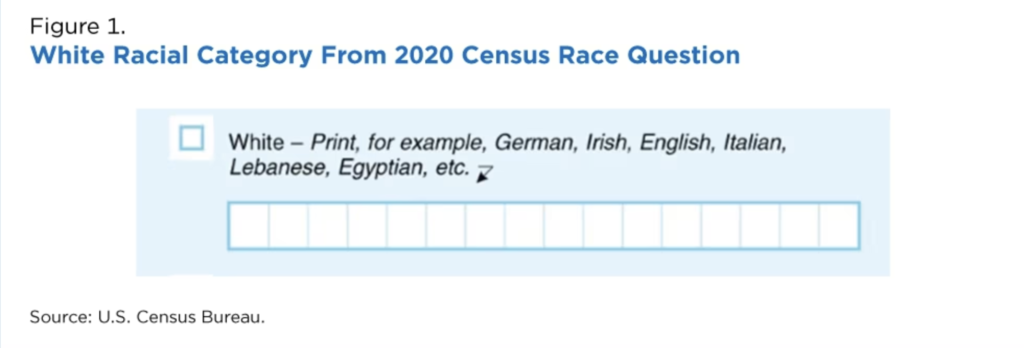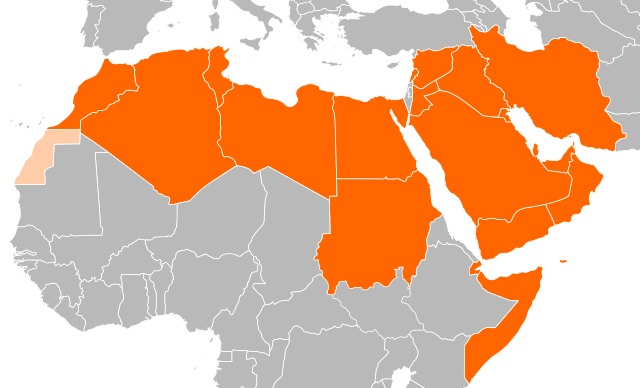A Step in the Right Direction: U.S. Census Bureau Release Reveals Important Information on the Arab American Community
By Salma Heram / Arab America Contributing Writer
On September 21, 2023, the U.S. Census Bureau released the Detailed Demographic and Housing Characteristics File A (Detailed DHC-A), which revealed that 3.5 million Americans reported being Middle Eastern and North African in the 2020 Census. While this number is an underrepresentation of the true number of Americans of MENA descent, it is still a step in the right direction to get both Arab and non-Arab descendants of the MENA region counted in important U.S. Census data. Follow along as I break down the Census findings and explain its significance to our community.
Understanding the Figures
When looking at data like the 3.5 million figure, it is important to understand how this data was collected and what exactly it means. In response to public feedback, the U.S. Census Bureau added a write-in response box under the “White” racial category, allowing respondents to print their exact identity, providing German, Irish, English, Italian, Lebanese, and Egyptian as examples. While many Lebanese and Egyptians, as well as other Arabs, don’t identify as White, these nationalities were included in the “White” category as per the standards set by the U.S. Office of Management and Budget (OMB) in 1997. While Arab American advocacy organizations like the Arab American Institute (AAI) and the American-Arab Anti-Discrimination Committee (ADC) have been advocating for the inclusion of a MENA ethnic category on the Census for years, the 2020 Census did not include MENA as a separate ethnic category. However, many are optimistic that it will be included in the 2023 Census.

It is important to note, however, that the MENA ethnic category encompasses more than just the Arab community. It includes Iranians and Israelis, as both of those countries are considered to be part of the Middle East. Furthermore, the MENA category encompasses a wide variety of non-Arab ethnic groups within Southwest Asia and North Africa, including Assyrian, Amazigh, Berber, Chaldean, Kurdish, Yazidi, and Druze populations. Knowing this information is important for interpreting the data, leading one to understand that the 3.5 million figure is not the number of Arab Americans in U.S., despite it being the largest subcategory within the MENA category, but rather the number of all Americans of MENA-descent. Furthermore, this figure can very easily be a underrepresentation of the true number of MENA Americans in the U.S., since 1) not every MENA American responded to the Census, and 2) respondents had to write-in their identity, further limiting this figure to only those who took the Census survey and wrote-in their ethnic identity. While the Census reported between 2.6 to 2.8 million Arab Americans, AAI estimates the number of Arab Americans to be at least 3.7 million, taking into consideration census data, as well as immigration statistics and natural population growth.

Significant Data Findings
Within the MENA respondents, the top ethnicities were Lebanese, Iranian, Egyptian, and Arab, indicating that while some Americans who hail from Arab countries preferred to identify by their specific nationalities, others preferred to identify more broadly as Arab. The states with the highest number of MENA populations included California, Michigan, New York, Texas, and Florida, with Lebanese, Egyptian, Iraqi, and Chaldean consistently appearing as the top ethnic subcategories within these states.
Why is This Important?
So, why was this data so significant, and why are advocacy groups pushing for a MENA ethnic category to be included in the 2030 Census by the Office of Management and Budget (OMB). Without data on our Arab community, we cannot hope to understand the breadth of those we serve, their needs, and the patterns they exhibit. Data collection not only allows us to see just how powerful and significant our population is, but allows our community to gain easier and better access to social services such as healthcare, nutrition programs, scholarships, and other services reserved for minority communities. The collection of population data on the Arab community would also allow relevant research to be done on the community, with the potential to help improve our understanding of our community’s health and its social determinants, our socioeconomic status and activity, our civic engagement, and more.
The significance of including MENA specifically as an ethnic category is also of dire importance. Historically, the majority of the Arab community and the wider MENA population has been grouped under the “White” racial category. This is despite the fact that in daily life, most Arabs are not perceived as White and are instead regarded as foreigners; we thus do not enjoy the same privileges as White people in America. Furthermore, many Arabs are perceived as, and many identify as, Black. It is thus reductive and outright false to include all Arabs and MENA individuals under the White racial category. To do so is to erase the identity of Black Arabs and Afro-Arabs, and also reduces the experience of non-Black Arabs who are not perceived by society as White. As such, it seems that the most ideal solution would be to include MENA as an ethnic category, comparable to the Hispanic/Latino ethnic category on the Census, and this community also encompasses both phenotypically White and Black populations. The implications of including a MENA category in the 2030 Census are vast, and the data from such a change would be an incredible tool to help improve and serve our community.
Check out Arab America’s blog here!









